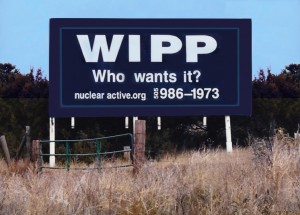CCNS NEWS UPDATE
Runs 7/24/15 through 7/31/15
(THEME UP AND UNDER) This is the CCNS News Update, an overview of the latest nuclear safety issues, brought to you every week by Concerned Citizens for Nuclear Safety. Here is this week’s top headline:
- Pace e Bene Hosting Campaign Nonviolence Conference in Santa Fe and Peace and Disarmament Vigils in Los Alamos August 6th through 9th
To commemorate the 70 years since the U.S. dropped atomic bombs on Hiroshima and Nagasaki, Japan on August 6th and August 9th, respectively, Pace e Bene is hosting a four-day Campaign Nonviolence conference in Santa Fe from Thursday, August 6th to Sunday, August 9th and organizing two peace and disarmament vigils in Los Alamos on Thursday, August 6th and Sunday, August 9th.
The conference is sold out, but free livestreaming will be available at http://paceebene.org/.
The peace and disarmament vigils will take place in Los Alamos, the birthplace of the atomic bomb and home of Los Alamos National Laboratory, which continues to manufacture plutonium triggers for nuclear weapons. The vigils are free and open to the public.
On Thursday, August 6th from 2 to 4 pm at Ashley Pond, the annual Sack Cloth and Ashes ceremony will take place. After gathering at Ashley Pond, participants will walk on Trinity Drive towards the entrance of the national laboratory carrying peace signs. They will stop and sit in symbolic sackcloth and ashes, the oldest form of political protest, for 30 minutes. They will then return to Ashley Pond for a rally calling for nuclear disarmament.
On Sunday, August 9th from 11 am to 1 pm at Ashley Pond, the Nagasaki Day peace vigil will take place. There will be a procession through the Los Alamos townsite and a rally at Ashley Pond.
On Sunday, Veterans for Peace will provide round-trip bus transportation from the Hilton Hotel in Santa Fe to Los Alamos and back. Buses will leave from in front of the Hilton by 9:30 am. Buses will leave Los Alamos around 1:30 pm and return to Santa Fe around 2:30 pm.
Founded in 1989 by the Franciscan Friars of California, Pace e Bene is an independent, nondenominational nonprofit organization. Its name is derived from St. Francis and St. Clare of Assisi who used the phrase in their own time as a form of greeting. Translated from the Italian, it means, “Peace and all good.” It is also a blessing, a hope, and a way of acknowledging the sacredness of those whom they encountered, as in, “May you have the fullness of well-being; may you be secure and happy; may you not want; may your dignity be respected; may the goodness in your inmost being flourish; may the world in which we live know this deep peace.”
It is in this spirit that Pace e Bene works to mainstream peacemaking that will empower people from all walks of life to prayerfully and relentlessly engage in nonviolent efforts for the well-being of all.
This has been the CCNS News Update. For more information, please visit our website at nuclearactive.org and our Facebook page.














